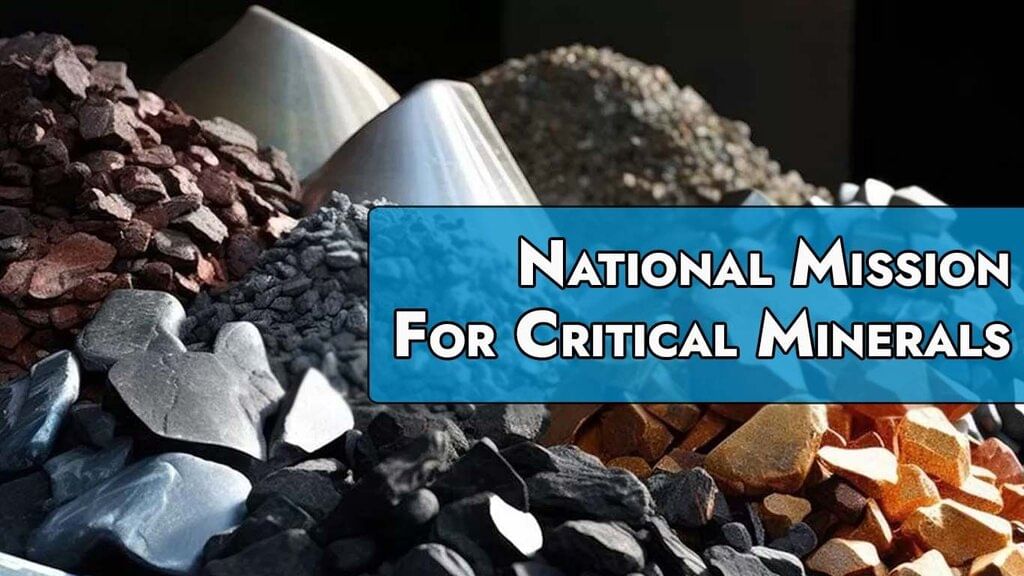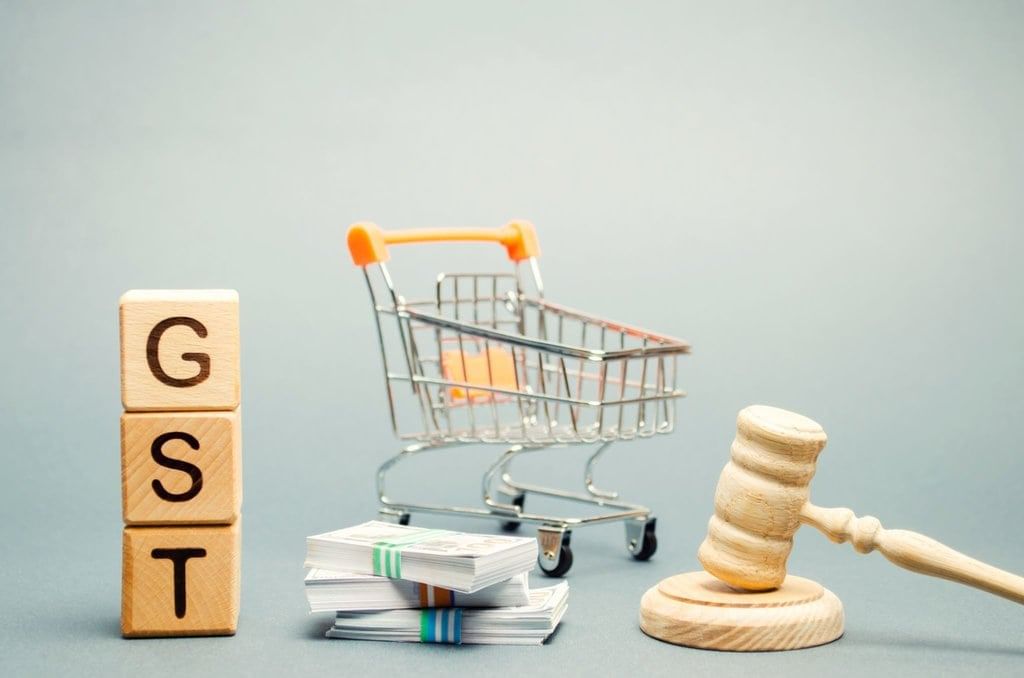PIB Summary - 6th September 2025 | PIB (Press Information Bureau) Summary - UPSC PDF Download
India’s Critical Mineral Mission

Introduction
In January 2025, India launched the National Critical Minerals Mission (NCMM) with a budget of ₹16,300 crore, aiming for a strategic blueprint to ensure energy security, industrial growth, and technological independence through the sustainable use of critical minerals.
What are Critical Minerals?
Critical minerals are essential for a country’s economy and national security but have vulnerable supply chains. These minerals are used in various sectors such as clean energy technologies, electronics, transportation, telecommunications, and defense.
In 2023, India identified 30 critical minerals, including lithium, cobalt, nickel, rare earth elements, graphite, copper, gallium, germanium, tungsten, and vanadium. The list of critical minerals varies from country to country based on national priorities.
Why They Matter for India’s Energy Future
- Solar Energy: Critical minerals like silicon, tellurium, indium, and gallium are essential for manufacturing photovoltaic cells used in solar energy generation. India currently has a solar capacity of 64 GW and aims to significantly increase this capacity in the coming years.
- Wind Power: Minerals such as neodymium and dysprosium are crucial for producing high-performance magnets used in wind turbine generators. India has set a target to expand its wind power capacity from 42 GW to 140 GW by 2030.
- Electric Vehicles (EVs): Lithium, nickel, and cobalt are key components in batteries used for electric vehicles. India aims for 30% of all vehicles sold to be electric by 2030, making these minerals vital for the EV sector.
- Energy Storage: The integration of renewable energy sources requires efficient energy storage solutions, primarily lithium-ion batteries. Lithium, cobalt, and nickel are essential for manufacturing these batteries, facilitating the storage and use of renewable energy.
Legal & Policy Foundation
The National Critical Minerals Mission is founded on an amendment to the Mines and Minerals (Development and Regulation) Act, which grants the central government exclusive authority to auction 24 out of the 30 identified critical minerals.
The framework of the NCMM encompasses the entire value chain, including:
- Exploration
- Mining
- Processing
- Recycling
- Research and Development
- Human Resource Development
- Strategic Stockpiling
Components of NCMM
Domestic Exploration
- The NCMM aims to initiate over 1,000 projects to identify and assess reserves of critical minerals within India.
- This domestic exploration is crucial for reducing dependence on foreign sources and ensuring a stable supply of essential minerals.
International Assets
- Public Sector Undertakings (PSUs) and private firms in India are encouraged to acquire stakes in foreign projects to secure critical minerals.
- This approach aims to diversify sources and ensure a steady supply of minerals that are crucial for India’s energy and industrial needs.
Recycling Push
- The NCMM includes a strong emphasis on recycling critical minerals from end-of-life products.
- An incentive scheme with a budget of ₹1,500 crore has been approved to boost recycling capacity and output.
- The target is to achieve an annual recycling capacity of 270 kilotonnes (KT), with 40 KT of critical minerals output, attracting ₹8,000 crore in investments and creating 70,000 jobs.
Unconventional Sources
- Pilot projects are being initiated to explore the extraction of critical minerals from unconventional sources such as fly ash, red mud, mine tailings, and overburden materials.
- A budget of ₹100 crore has been allocated for these pilot projects, aiming to develop sustainable and innovative methods for mineral extraction.
Centres of Excellence (CoEs)
- The NCMM establishes seven Centres of Excellence (CoEs) across various Indian Institutes of Technology (IITs) and Council of Scientific and Industrial Research (CSIR) laboratories.
- These CoEs will focus on research, development, and innovation in critical minerals, contributing to the overall objectives of the NCMM.
Patents & Innovation
- The NCMM aims to foster innovation and intellectual property development in the field of critical minerals and related technologies.
- The target is to file 1,000 patents by 2030, with a focus on advanced materials for batteries, semiconductors, and defense technologies.
- As of 2025, a total of 21 patents were filed in May and 41 in June, with 10 grants issued during the same period.
Strategic Objectives
- Reduce Import Dependence: Minimize reliance on foreign sources for critical minerals by enhancing domestic exploration, mining, and recycling capabilities.
- Secure Long-term Supplies: Ensure a stable and long-term supply of critical minerals essential for clean energy, electric vehicles, and defense applications.
- Build Strategic Reserves: Establish strategic reserves and stockpiles of critical minerals to safeguard against supply chain disruptions and geopolitical uncertainties.
- Global Hub in Mineral Value Chains: Position India as a global leader in mineral value chains, from extraction to processing and recycling, attracting investments and fostering public-private collaborations.
Broader Significance
- Critical minerals are often referred to as the “oil of the 21st century” due to their scarcity, strategic importance, and contested nature.
- These minerals are vital for achieving India’s climate goals, including:
- Reducing emission intensity by 45% by 2030 compared to 2005 levels.
- Sourcing 50% of power from non-fossil fuel sources by 2030.
- Achieving Net Zero emissions by 2070.
The NCMM aims to position India at the centre of global clean technology supply chains, ensuring a sustainable and secure supply of critical minerals for the future.
Conclusion
- The National Critical Minerals Mission (NCMM) represents more than just resource extraction; it embodies a comprehensive geoeconomic strategy for India.
- By integrating supply security, innovation, sustainability, and global partnerships, the NCMM aims to transform India from a resource-dependent economy into a critical mineral powerhouse.
- If successful, this initiative will not only secure essential minerals for future industries but also position India as a leader in the global clean technology supply chain, shaping the industries of tomorrow and contributing significantly to national and global sustainability goals.
Simplified GST for Growth of Indian Commerce and Trade

56th GST Council Meeting: Key Highlights and Sector-Wise Reforms
The 56th GST Council Meeting, held on September 3, 2025, aimed to simplify the GST structure, reduce slabs, and rationalize rates to promote affordability, MSME growth, and export competitiveness. The meeting proposed a shift towards a 2-slab GST system, with a focus on cutting rates for essential goods and MSME-heavy sectors.
Why This Matters
- For Consumers: Cheaper essential goods such as food, textiles, footwear, and toys.
- For MSMEs: Reduced compliance burden and lower working capital costs.
- For Industry: Lower logistics, packaging, and transportation costs, enhancing overall competitiveness.
- For Exports: Improved price competitiveness in sectors like textiles, leather, handicrafts, and processed foods.
- Macro Impact: Boosting consumption leads to higher demand, strengthening the MSME sector and acting as a growth multiplier.
Sector-Wise Reforms
Leather & Footwear
- GST reduction from 12% to 5% for chamois leather, composition leather, and prepared hides/skins.
- Footwear priced at ≤ ₹2500 per pair now attracts 5% GST.
- Job work on hides and leather sees a GST decrease from 12% to 5%.
- Impact: This reform is expected to boost domestic demand, lower costs for MSMEs, and enhance export competitiveness in the leather and footwear sectors.
Paper & Packaging (E-commerce Backbone)
- GST on packing paper, cartons, and trays reduced from 12% to 5%.
- GST on commercial vehicles (trucks and vans) decreased from 28% to 18%.
- Impact: These changes will lower packaging and shipping costs for MSMEs and e-commerce businesses, reduce freight rates, and improve margins for MSMEs, enhancing the global competitiveness of supply chains.
Wood Products (Sustainable Alternatives)
- GST on rice husk board, bamboo flooring, bagasse board, gypsum/fibre boards reduced from 12% to 5%.
- Impact: This encourages the use of eco-friendly substitutes, supports the MSME wood industry, and improves competitiveness in the wood products sector.
Handicrafts (Artisan Economy)
- GST reduction from 12% to 5% for idols (wood, stone, metals), handicraft candles, paintings, bags, terracotta, brass, and copper artware.
- Impact: These changes enhance affordability, strengthen artisan livelihoods, and boost exports under the cultural economy.
Commercial Goods Vehicles (Logistics Backbone)
- GST on trucks and delivery vans reduced from 28% to 18%.
- Impact: This reduction lowers capital costs for operators, making the transport of agricultural goods, FMCG products, steel, cement, and e-commerce packages cheaper, with a cascading effect on reducing inflationary pressures.
Tractor Parts (Agri-Linked Manufacturing)
- GST on tyres, gears, hydraulic pumps, and engines set at 5%.
- Impact: This boosts domestic and export demand for tractors, strengthens ancillary MSMEs, and consolidates India’s position as a tractor manufacturing hub.
Food Processing (Agro-Industry Growth)
- GST on prepared and preserved vegetables, fruits, and nuts reduced from 12% to 5%.
- Impact: This encourages cold storage and value addition, reduces wastage, improves farmer returns, and strengthens agri-export positioning.
Textiles (Major Reform – IDS Correction)
- GST on man-made fibres reduced from 18% to 5%.
- GST on man-made yarns reduced from 12% to 5%.
- Impact: These changes correct the Inverted Duty Structure anomaly, reducing cost distortions across the textile supply chain and boosting domestic demand and export competitiveness, supporting India’s ambition as a global textile hub.
Toys & Sports Goods (Child-Centric MSME Sector)
- GST reduction from 12% to 5% for toys and sports goods.
- Impact: This makes toys more affordable, supports MSME toy makers, reduces cheap imports from neighboring countries, and strengthens the “Vocal for Local” initiative.
Broader Economic Significance
- MSME Boost: Lower compliance costs and reduced tax burdens act as a growth multiplier for the MSME sector, which employs over 11 crore people.
- Consumption Push: Making goods more affordable stimulates demand in domestic markets.
- Export Competitiveness: Sectors like textiles, leather, and handicrafts gain a global price advantage, enhancing export potential.
- Logistics Cost Reduction: Cheaper freight rates improve the efficiency of supply chains, benefiting various industries.
- Sustainability: Lower GST rates on eco-friendly boards and handicrafts encourage green manufacturing practices and support the cultural economy.
- Ease of Doing Business: The movement towards a simplified 2-slab GST system reduces the compliance burden for businesses, improving the overall ease of doing business in the country.
Conclusion
- The GST rationalisation in September 2025 marks a significant step towards simplification and demand stimulation, with reductions across various sectors benefiting consumers, MSMEs, and exporters.
- This aligns with national priorities of ensuring affordable goods, strengthening the MSME ecosystem, and enhancing global competitiveness in manufacturing, all while fostering inclusive and sustainable economic growth.
FAQs on PIB Summary - 6th September 2025 - PIB (Press Information Bureau) Summary - UPSC
| 1. What is the significance of India's Critical Mineral Mission? |  |
| 2. How does the Simplified GST contribute to the growth of Indian commerce and trade? |  |
| 3. What are the expected outcomes of implementing the Critical Mineral Mission in India? |  |
| 4. What challenges does India face in the implementation of the Critical Mineral Mission? |  |
| 5. In what ways can the Simplified GST impact small and medium enterprises (SMEs) in India? |  |





















